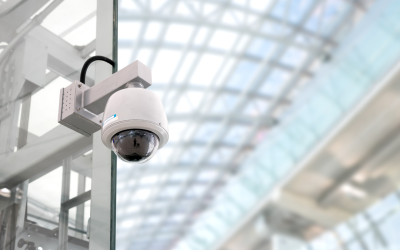When it comes to business security, access control systems are critical for establishing who can and cannot enter the building and when, but the technology is constantly improving to increase asset protection and reduce security threats. Aside from keeping doors safe, today’s leading commercial access control systems also track who is coming and going, which doors are being unlocked, and provide sophisticated security features such as remote access, touchless entry for commercial doors, and native occupancy tracking.
What is Access Control?
The goal of access control is to ensure that only those who are authorized to be there are allowed to enter a building or workplace. For many years, the deadbolt lock and its accompanying brass key were the standards of access control; nevertheless, modern enterprises demand more. They want to be able to regulate who comes and goes via their doors, but they also want to be able to view and manage access.
Instead of keys, we now carry access cards or ID badges to get access to restricted places. Access control systems can also be used to restrict access to workstations, sensitive data file rooms, printers, and entry doors. Exterior door access is typically maintained by a landlord or management agency in bigger buildings, whereas internal office door access is controlled by the tenant company.
Three Key Elements of Access Control
Everyone may use their access cards to enter the main door, but they will not be allowed to access locations containing secure or privileged information.
- User Facing – The cards, ID badges, and, more recently, smartphone apps that generate an OK beep when presented at a card reader and unlock the door are the most well-known components of access control systems. The advantage of using credentials is that they are individualized, thus any unlock event can be tracked back to the person associated with them.
- Admin Facing – The management dashboard, or portal, is the admin-facing side, where the office administrator, head of security, or IT manager sets the criteria for who is authorized to visit the premises and when they can do so. This entails a management dashboard, which is usually stored in the cloud, and a method for granting access, such as a card programming device.
- Infrastructure – The infrastructure components rely on the building infrastructure to function. The most recognizable components are the locks, but there are others, such as the controller, server, and cables.
The Importance of Access Control
Aside from the apparent need for an extra layer of protection in a business, there are a number of other reasons why access control—particularly cloud-based access control—should be a critical component of any business.
Physical Security – This keeps unwelcome visitors out of your building. It also ensures that other contacts, such as visits to your workplace or couriers delivering packages for your company, are carefully managed
Compliance – A certified access control system improves your credibility, making you safer and better protects you from malware and hackers, and eventually leads to more income.
Revenue – This can assist you in transforming your company into a 24-hour-a-day, seven-day-a-week operation. The high level of security ensures that your facility can remain open even if no one is inspecting the entrance. More open hours and revenue are generated without incurring any more costs.
For small and large enterprises, electronic access control systems give a new degree of physical security. They have been improved by new technologies, which have made them more intuitive and sensitive to business needs, revolutionizing the physical security of millions of offices. To obtain answers to all of your commercial door lock questions and a personalized quotation for your business access control system, contact our Expert Security Solutions team of access control and security professionals.



